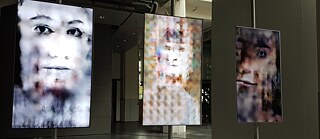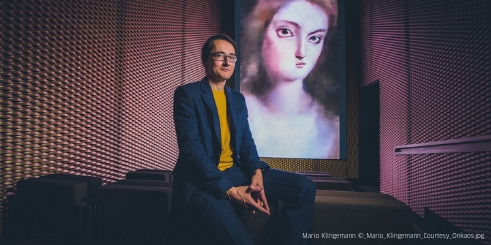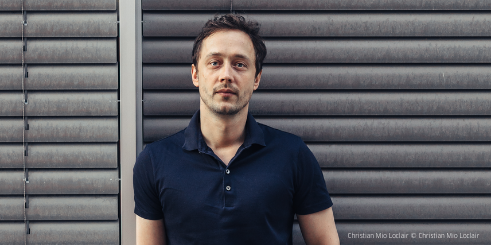Exhibition
#CREATIVE AI: FUTURE U

Art & Artificial Intelligence
The exhibition Future U dares to imagine a future in which intelligence, creativity and artistic intellect can be artificial. It simultaneously presents a reaction to the rapid expansion in the use of artificial intelligence (AI).
As humans and machines become increasingly interconnected, the boundary between ‘natural’ and ‘artificial’ fades. Artificial intelligence is changing the way we communicate, how we are being creative and how we experience and understand our world. For our project Creative AI: Kulturtechniken 4.0 we invite artists, experts and other creatives to take part in this important discussion.
The Future U exhibition, curated by Jonathan Duckworth and Evelyn Tsitas, scrutinizes our preconceived notions towards art and artificial intelligence.
This exhibition simultaneously explores our urge to make machines human, and our ever-growing desire to augment our bodies with technology.
The works in this collection are radically modern and thought provoking. They emphasize the ever-changing nature of technology and artificial intelligence, serving simultaneously as a snapshot of the present and a daring glance into the future.
The works of four important German artists are featured in the exhibition Future U: Bettina von Arnim, Maina-Miriam Munsky, Mario Klingemann und Christian Mio LoClair.

German artist Mario Klingemann will be displaying his works at Future U. A leading pioneer in the AI art movement, Klingemann creates thought provoking and visually striking artworks by harnessing neural networks, code and algorithms.He was invited to present his work “Mistaken Identity”: an edition of fully synthesized videos created by machines that misinterpret the data they were fed in interesting and surprising ways.
Klingemann’s drive to understand, question and subvert the inner working of systems is reflected in his artworks. To truly appreciate his artistry we must look beyond the visual and aesthetic components and into the patterns and formulas that precurse his pictures.

Also showcasing his works at Future U is Berlin-Based digital artist Christian Mio LoClair, whose works are heavily influenced by AI and machine learning. Mio LoClair’s art deals with electronic and human aspects simultaneously.
As a former dancer, many of his works explore human movement through a digital lens. His aim is the digitization of human action and humanization of digital processes.
Future U will present Christian Mio LoClair’s ongoing research “Blackberry Winter”, a video installation showing artificial human motion in asymmetry. Three different Choreographies of human bodies and their ongoing neural relationship act in difference to each other using custom machine-learning solution.
Artists have long explored the endless fascination we have with augmented humans, artificial lifeforms, and machines that replicate and extend our physical and creative potential. Bettina von Arnim’s prints from the 1970s examine the dehumanising effects of rapidly advancing technology. Her etchings depict an alarming fusion of human bodies and machines in an age of advanced, technology-enhanced capitalism. These prescient works from the RMIT Art Collection (donated 2010 by the Goethe-Institut Australia) evoke a melancholic future, and have a chilling currency in the twenty-first century as AI, robotics and other forms of smart automation offer to bring great economic benefits but potentially at an even greater human cost.
Other works from the RMIT Art Collection (donated by the Goethe-Institut) comprise Maina-Miriam Munsky’s almost clinical socio-psychological representation of the technological interventions in medicine, where humans are reduced to flesh to be saved by machines. Munsky portrays an unflinching reality of failing newborn bodies cocooned and kept alive by incubators, rather than by their mother’s care. Her focus on the interventions of technology and not nature in childbirth strips away romanticised depictions of the maternal ideal. In doing so, the artist foreshadows in her works from the early 1970ies the contemporary concerns of commercialised reproductive technologies, but also highlights the potential these technologies offer vulnerable women.
Further artists of the exhibition FUTURE U are:
Holly Block, Karen Casey, Jonathan Duckworth, Peter Ellis, Jake Elwes, Alexi Freeman, Libby Heaney, Leah Heiss, James Hullick, Amy Karle, Pia Interlandi, Zhuying Li, Patricia Piccinini, Stelarc, Deborah Wargon
Details
RMIT Gallery, Melbourne
344 Swanston Street
VIC 3000 Melbourne
Language: English
Price: Free
Tel +61 3 9864 8923 Gabriele.Urban@goethe.de